For most of us, growing up with a dog is one of the best things we can think of when it comes to raising kids. Dogs not only give our children a non-judgmental playmate and companion, but a dog encourages them to go outside and teaches them responsibility and respect. But as we know by the dog bite statics, dogs and kids do not naturally mesh every single time. And while you cannot prevent everything, and there’s always a chance something could happen, the following tips will help foster a healthy relationship between your kids and your dog. You can use these same tips for dogs your kids come in contact with that you don’t own.
#1 – Teach Kids Respect
One of the first steps is to teach your children to respect that a dog is a living being and may not like being touched in certain ways. While a dog can be taught to tolerate an awful lot, is it fair to ask him to suffer abuse simply because it’s a child that’s doing it? Plus, a child should be taught to not hit anything that’s living, yes?
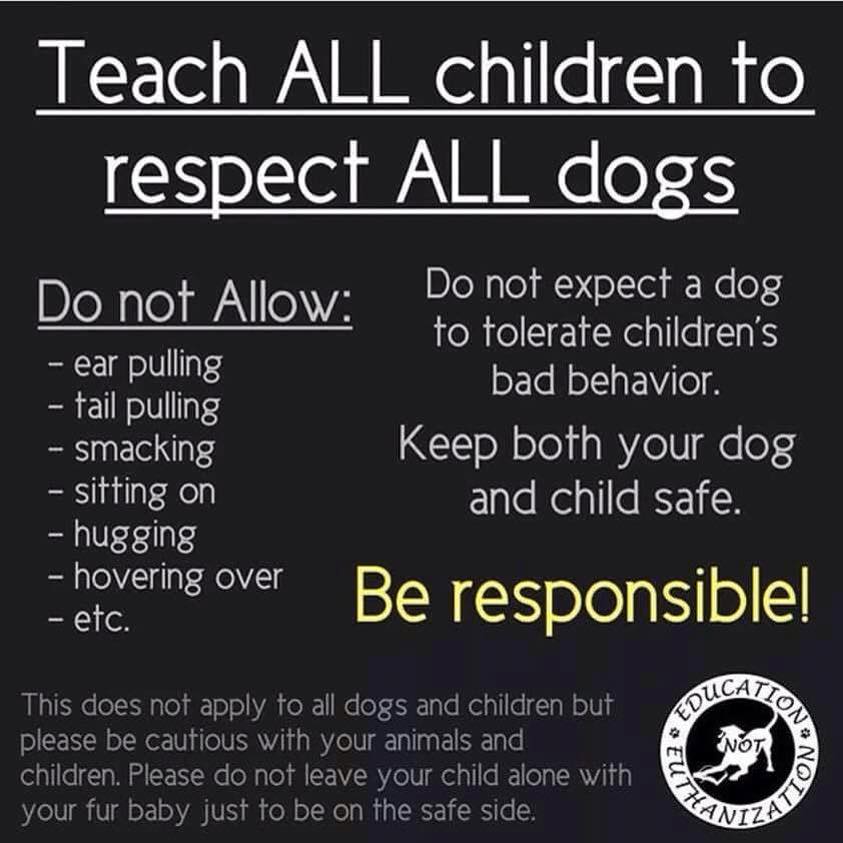
#2 – Condition Your Dog
Pair your kids with something your dog loves, so she sees them as givers of good things. One of the easiest ways to do this is by first giving your dog treats every time your dog sees or hears a kid (no touching). Then, when the dog is comfortable and the child can be trusted, have the child toss treats to the dog. If the child is old enough, have him feed the dog treats when he is comfortable with the cookies being tossed.

#3 – Supervise
You need to do your part too. Don’t ever leave a young child alone with a dog. It’s your job as the adult to be aware of what is going on at all times and stop things before they get out of hand.

#4 – Give Your Dog a Safe Space
Teach your children that when the dog chooses to go lie down away from them or to go into his crate, that the dog’ is telling the child he has had enough attention and needs a nap. This can prevent a lot of bad interactions. Tell them that when the dog is in his spot, he is not to be bothered until he gets up on his own.
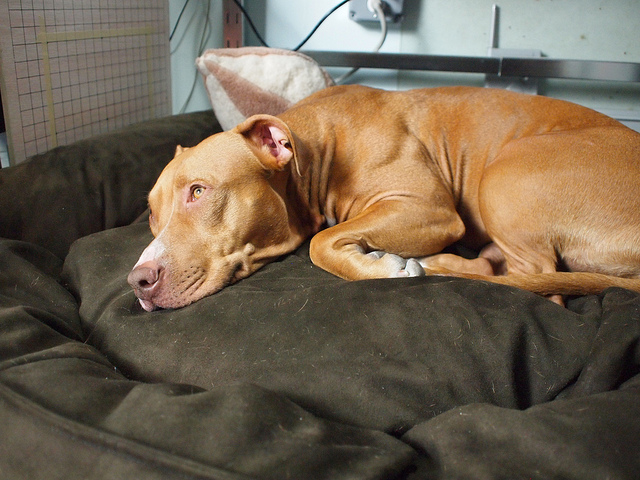
#5 – Encourage Appropriate Play
Playing is a great way to strengthen the bond between your kid and your dog. Make sure your child understands the rules of play and make sure your dog has been taught not to grab things out of people’s hands. A safe game is fetch. Teach your dog to drop on cue and use a tennis ball launcher so your child doesn’t have to reach his hand down, which puts his face near the dog’s face. This is a great way for them to bond safely.
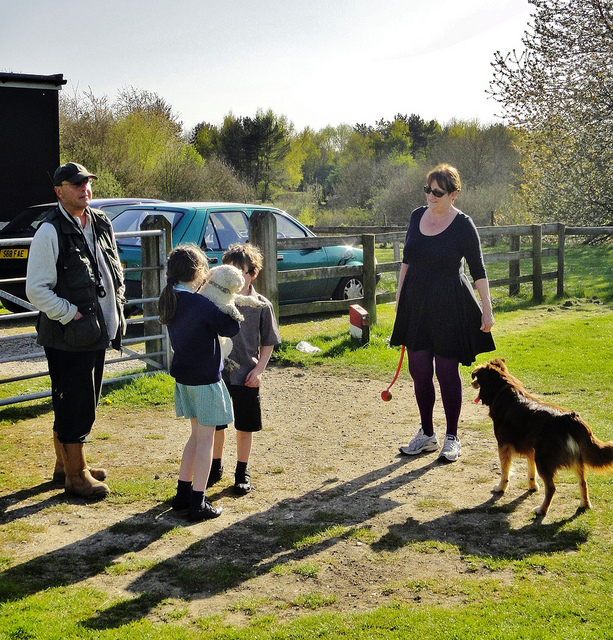
#6 – Puppy Time Out
If your dog tends to be the type that loves kids a little too much – meaning they get overly excited and tries to jump on them, licking them all over and even accidentally knocking them over, a “time out” is a good method to use to teach your puppy he needs to be calm around kids. As soon as he gets too rambunctious, just lead him calmly away from the child and put him on a tie-down or in another room until he calms down. When he calms down, take him back to the kid. He will figure it out quickly and your child will be grateful (as will any guest that comes over!)
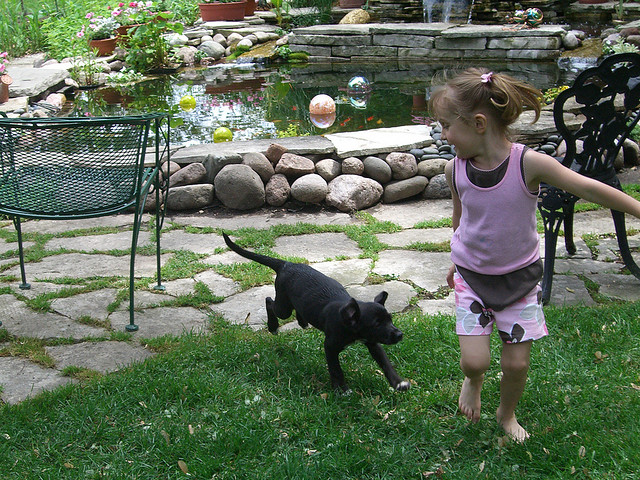
#7 – Kid Time Out
On that same thread, some kids can get just a bit overwhelmed with a puppy and in excitement might start screaming, running, or being too rough. Incorporate the same idea as a “time out” for your child, by calmly removing them (not the dog!) from the room. If they are old enough, explain to them why and let them know as soon as they are calm they can go back with the dog.
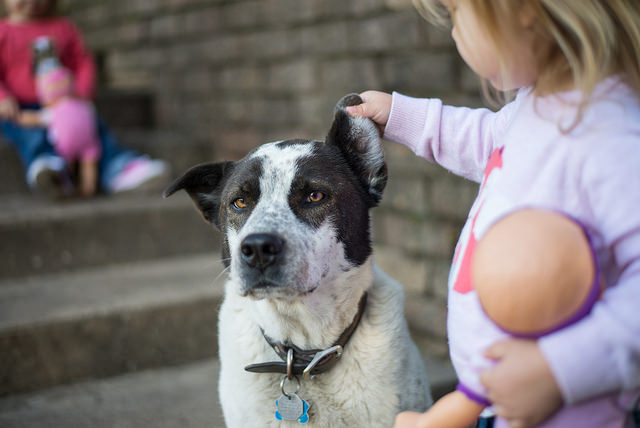
#8 – Remain Calm
If you couldn’t tell from my above tips, you need to stay calm. If you are overly nervous about the whole situation, don’t get a dog. Both your child and the dog will sense it and be nervous and stressed themselves, which can lead to a bad situation.
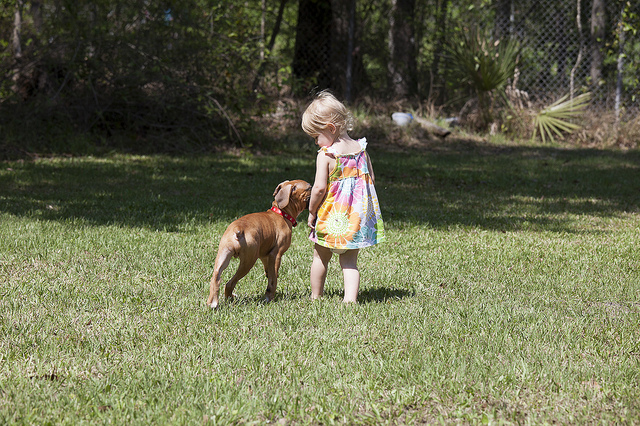
#9 – Teach Your Kids Canine Body Language
We know it’s totally unrealistic for you to always watch your dog and your kid – and that’s not the point of having the dog anyway, right? You want them to be able to go outside and play while you work inside. Teaching your child to read canine body language will go a long way to not only making your dog happier with your child but to make you feel more comfortable about any alone time. Dr. Sophia Yin’s FREE posters are the best for this.
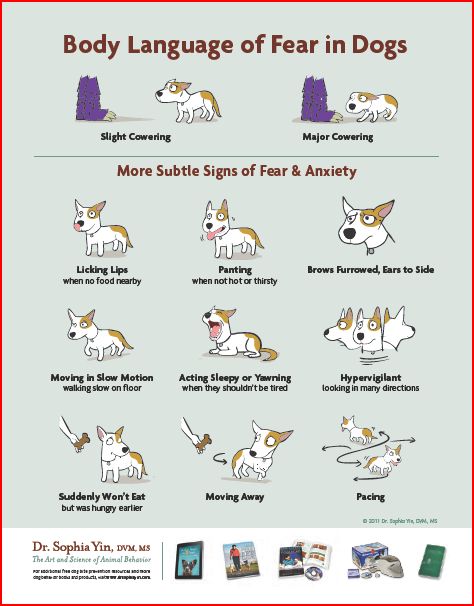
#10 – Chose Carefully
If you are adding the dog post children, or you are getting a dog knowing you will be adding kids to your house in the near future, keep that in mind while choosing a dog. Research breeds and temperaments – some are generally better with kids than others. If adopting, as the shelter or rescue workers if the dog you are interested in is good with kids. This decision is a big one, don’t choose lightly.
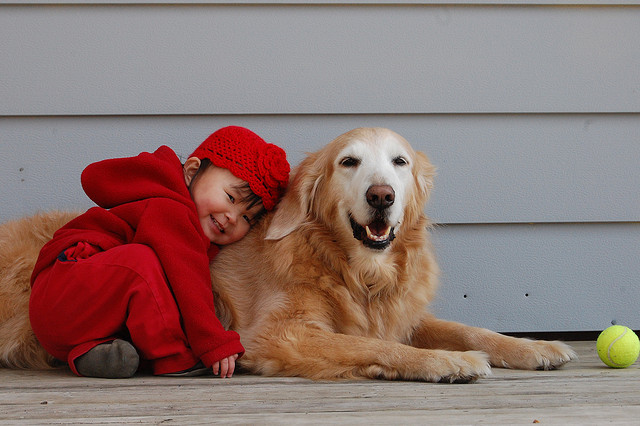
#11 – Include Your Child in Training
One of the best ways to strengthen a bond between a child and their dog is through training. The dog will learn to listen to the child and your child will learn how to appropriately get the dog to listen – both of these are key in preventing dog bites.
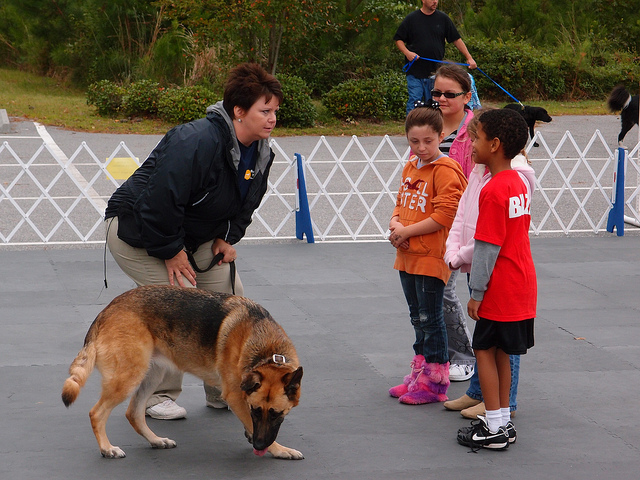
 Toledo, United States.
Toledo, United States.
